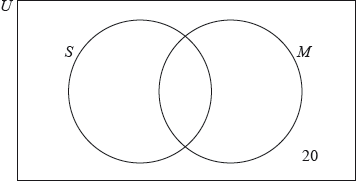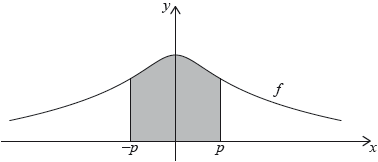| Date | May 2019 | Marks available | 1 | Reference code | 19M.2.SL.TZ2.T_1 |
| Level | Standard Level | Paper | Paper 2 | Time zone | Time zone 2 |
| Command term | Write down | Question number | T_1 | Adapted from | N/A |
Question
Sila High School has 110 students. They each take exactly one language class from a choice of English, Spanish or Chinese. The following table shows the number of female and male students in the three different language classes.
A test was carried out at the 5 % significance level to analyse the relationship between gender and student choice of language class.
Use your graphic display calculator to write down
The critical value at the 5 % significance level for this test is 5.99.
One student is chosen at random from this school.
Another student is chosen at random from this school.
Write down the null hypothesis, H0 , for this test.
State the number of degrees of freedom.
the expected frequency of female students who chose to take the Chinese class.
the statistic.
State whether or not H0 should be rejected. Justify your statement.
Find the probability that the student does not take the Spanish class.
Find the probability that neither of the two students take the Spanish class.
Find the probability that at least one of the two students is female.
Markscheme
* This question is from an exam for a previous syllabus, and may contain minor differences in marking or structure.
(H0:) (choice of) language is independent of gender (A1)
Note: Accept “there is no association between language (choice) and gender”. Accept “language (choice) is not dependent on gender”. Do not accept “not related” or “not correlated” or “not influenced”.
[1 mark]
2 (AG)
[1 mark]
16.4 (16.4181…) (G1)
[1 mark]
(8.68507…) (G2)
[2 marks]
(we) reject the null hypothesis (A1)(ft)
8.68507… > 5.99 (R1)(ft)
Note: Follow through from part (c)(ii). Accept “do not accept” in place of “reject.” Do not award (A1)(ft)(R0).
OR
(we) reject the null hypothesis (A1)
0.0130034 < 0.05 (R1)
Note: Accept “do not accept” in place of “reject.” Do not award (A1)(ft)(R0).
[2 marks]
(A1)(A1)(G2)
Note: Award (A1) for correct numerator, (A1) for correct denominator.
[2 marks]
(M1)(M1)
Note: Award (M1) for multiplying two fractions. Award (M1) for multiplying their correct fractions.
OR
(M1)(M1)
Note: Award (M1) for correct products; (M1) for adding 4 products.
(A1)(ft)(G2)
Note: Follow through from their answer to part (e)(i).
[3 marks]
(M1)(M1)
Note: Award (M1) for multiplying two correct fractions. Award (M1) for subtracting their product of two fractions from 1.
OR
(M1)(M1)
Note: Award (M1) for correct products; (M1) for adding three products.
(A1)(G2)
[3 marks]




